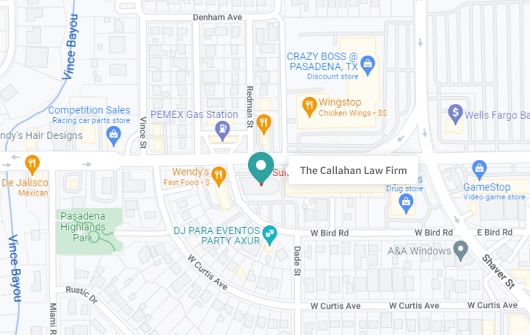Reading Your Texas Car Accident Report

In the aftermath of a vehicle collision, a car accident report also called the Texas Peace Officer’s Crash Report becomes an essential document that holds immense significance. It plays a pivotal role, ensuring that crucial details are accurately recorded and preserved to support your case in seeking justice and rightful compensation. This report, typically filed by the police officer who investigates the scene, provides a detailed account of the accident, including information on the parties involved, witness statements, conditions at the scene, and a preliminary assessment of fault.
For individuals seeking compensation for damages or injuries sustained in an accident, this report serves as a foundational piece of evidence. It helps insurance companies assess claims accurately and can be instrumental in legal proceedings, offering an objective overview of the accident that can support or challenge claims of liability and negligence.
Understanding and accurately interpreting your Texas car accident report is therefore vital for navigating the claims process and protecting your rights. If you have questions or need help after an accident, don’t hesitate to contact The Callahan Law Firm to schedule a free consultation.
What is a Texas Car Accident Report?
A Texas Car Accident Report, officially known as the Texas Peace Officer’s Crash Report (Form CR-3), is a crucial document prepared by law enforcement officers following a motor vehicle accident within the state of Texas. This report is filled out by the investigating police officer at the scene of the accident or shortly thereafter, capturing a wide array of important details regarding the incident.
When You Have to Report an Accident
If a police officer did not respond to the scene of a crash in Texas, the driver of a motor vehicle involved in the collision is required to file a Driver’s Crash Report, also known as a CR-2 (Crash Report 2), under certain circumstances:
- If anyone sustained injuries in the accident; or
- If anyone died as a result of the accident; or
- If the property damage resulting from the accident amounts to at least $1,000 in value.
The driver must complete and submit the CR-2 form to the Texas Department of Transportation within 10 days of the crash. This report ensures that essential details of the accident are officially documented, facilitating insurance claims and potential legal proceedings. Failure to file the report within the specified timeframe may result in penalties or legal consequences.
Key Components of the Report: What Information is Included?
Reading your Texas accident report will provide you with key details essential for understanding the circumstances surrounding a collision. It typically begins with the date, time, and location of the incident, specifying the type of area involved such as streets, highways, or parking lots. Additionally, it notes if the accident resulted in a fatality and identifies any involvement of school buses or commercial vehicles.
The report also includes comprehensive vehicle information such as:
- License plate number
- VIN
- Color, make, model of vehicle
- Estimated damages
- Driver details like names, addresses, phone numbers
- Driver’s license information
- Proof of insurance
It may also record whether sobriety tests were conducted, the type of specimen taken, and test results if applicable.
Passenger information covers restraint usage, seating positions, ejection from the vehicle, and injury severity. The report may also include details on where injured parties were taken for treatment.
Additionally, police opinions on factors and conditions contributing to the accident, including weather, road conditions, and traffic controls, are provided, often supplemented by visual diagrams. It’s important to note that police opinions are based on collected information and may not precisely reflect the actual sequence of events as they usually weren’t there to witness the accident.
How to Obtain Your Accident Report in Texas
To obtain your accident report in Texas, you have several options available to you. You can request the report online or submit a request via mail. Each method offers its own advantages and convenience, ensuring that you can access the necessary documentation regarding your accident in a manner that best suits your needs and preferences.
Obtain Report Online
To access your Texas Department of Transportation (TxDOT) accident report online, follow these steps:
Visit the TxDOT CRIS Website
Navigate to the official CRIS website provided by the Texas Department of Transportation. Here, you can request a new accident report or download a previously purchased report.
Search for Your Crash Report
After accepting the disclaimer, you’ll be prompted to submit documentation about the accident. Provide relevant information such as the name of someone involved, drivers license number or identification number, vehicle identification number (VIN) of an involved vehicle, or the TxDOT Crash ID number assigned to each report.
Pay for the Report
Once you enter the information, click “Find My Crash Report” and follow the instructions. Pay the fee to obtain the CR-3 report, which is $6. You can pay online using a credit card or debit card.
Download the Report
If the report is available, you can download it as a PDF for printing. Retain access to the report by keeping the Local Reference ID provided in the purchase receipt. If you ever need to redownload it, simply visit the official CRIS website and enter the Local Reference ID.
Obtain Report Through The Mail
If you prefer to receive the report via mail, follow these steps to request a accident report:
Download CR-91 Form
Obtain the Peace Officer’s Crash Report (CR-3) request form, CR-91, either from a Peace Officer or by downloading it from the TxDOT website.
Fill out CR-91 Form
Complete the CR-91 form with essential details about the accident, including the crash date, location, driver’s information (full name, date of birth, driver’s license number, and address), and details about passengers, pedestrians, or other involved parties.
Provide a Return Address
Include a mailing address where you want the CR-3 report mailed, such as your home address, insurance company, or legal representative.
Include Payment
Enclose the appropriate payment for the report, which is $6 for a standard copy and $8 for a certified copy, in the form of a check or money order payable to the Texas Department of Transportation.
Mail the Request
Send your completed CR-91 form and payment to the designated address for Crash Records at the Texas Department of Transportation in Austin, TX:
Crash Records
Texas Department of Transportation
PO Box 12879
Austin, TX 78711
By following these steps, you can request a TxDOT accident report to be mailed to you, ensuring you have access to important documentation regarding your accident
Regardless of the method chosen, obtaining your accident report in Texas ensures access to crucial documentation for insurance claims, legal proceedings, or personal records.
Using the Report in Your Legal Case
The accident report plays a crucial role in personal injury claims and lawsuits as it serves as a primary piece of evidence used to establish fault and liability. Lawyers rely on the report to gather essential details about the accident, including the date, time, location, parties involved, and the officer’s assessment of the scene. They use this information to construct a comprehensive narrative of the events leading to the accident and to determine the responsible party.
By carefully examining the details provided in the report, personal injury lawyers can build a strong case to support their client’s claim for compensation.
The importance of accuracy and completeness in the report for legal proceedings cannot be overstated. Inaccuracies or omissions can undermine the credibility of the evidence presented and weaken the case. Therefore, ensuring that the accident report is accurate and complete is essential for a successful outcome in legal proceedings related to the accident.
Common Issues and Discrepancies in Accident Reports
Common issues and discrepancies in accident reports can include errors or omissions in crucial details such as:
Inaccurate Description of the Accident: The narrative of how the accident occurred may not accurately reflect what happened, leading to misunderstandings or misinterpretations.
Incorrect Vehicle or Driver Information: Mistakes in recording vehicle details such as license plate numbers, VINs, or driver information like names and contact details can lead to confusion or difficulty in identifying parties involved.
Missing or Incomplete Information: Essential details such as witness statements, road conditions, or contributing factors to the accident may be omitted, affecting the comprehensive understanding of the incident.
If you find inaccuracies in your accident report, it’s crucial to take the following steps:
Document the Discrepancies: Carefully review the report and make note of any errors or omissions you identify. Ensure to gather evidence to support your claims, such as photographs, witness statements, or other relevant documentation.
Seek Legal Assistance: Contact an attorney experienced in car accidents. They can guide you through the process of challenging inaccuracies in the report and represent your interests in legal proceedings if necessary.
Contact the Reporting Agency: Your lawyer may be able to reach out to the law enforcement agency responsible for the report and request to amend the inaccuracies.
The impact of inaccuracies in accident reports on legal and insurance outcomes can be significant, as errors or omissions may lead to disputes with insurance companies regarding liability or compensation amounts.
Injured in a Car Accident? Let Our Personal Injury Lawyers Help!
If you’ve been injured in a car accident, the road to recovery can be challenging, but you don’t have to navigate it alone. At The Callahan Law Firm, we’re here to support you every step of the way. Our team of experienced personal injury lawyers understands the physical, emotional, and financial toll that a car accident can take on your life, and we’re committed to fighting for your rights and helping you obtain the compensation you deserve.
One crucial aspect of building a strong case is obtaining the accident report, which contains vital information about the circumstances surrounding the collision. Our dedicated team will work tirelessly to help you obtain this report promptly and ensure its accuracy so that no crucial details are overlooked.
With our experience and dedication to our clients’ needs, you can trust that we will leave no stone unturned in advocating for your rights and securing the compensation you deserve. Contact us today for a no-cost consultation with a car accident lawyer, and let us help you get the justice and closure you deserve.
FAQ
How quickly should I obtain a Texas car accident report after my accident?
You should aim to obtain a Texas Car Accident Report as soon as possible after your accident, typically within a few days to a week after the incident. The report is usually available within a few days after the accident investigation is completed. Promptly acquiring this report is crucial for filing insurance claims and beginning any necessary legal proceedings, as it contains essential information about the accident.
What if the information in my accident report is incorrect?
If an error is present in your accident report, it’s essential to address it promptly to ensure accuracy in the documentation of the incident. A skilled attorney experienced in handling car accidents can assist in challenging inaccuracies within the report. For instance, discrepancies in the “Injury Code” column or inaccuracies in the description of the accident can significantly impact your claim for compensation.
A knowledgeable attorney can identify and rectify such errors to ensure that the report accurately reflects the circumstances of the accident..
Can I still file a claim or lawsuit if I didn’t report the accident immediately?
Yes, you can still file a claim or lawsuit even if you didn’t report the accident immediately. However, in Texas, the law requires accidents to be reported if they result in injury, death, or significant property damage (typically over $1,000). Failure to report such accidents on time may not only violate state laws but could also complicate the process of filing a claim or lawsuit. Delayed reporting can make it harder to gather evidence, affect the credibility of your claim, and potentially impact the insurance claims process
Is a Texas car accident report sufficient to prove the other party’s fault in my case?
While a Texas car accident report serves as valuable evidence in determining fault, it will not usually be sufficient on its own. Depending on the complexity of the case, additional investigation and evidence gathering may be necessary to establish the other party’s liability.











